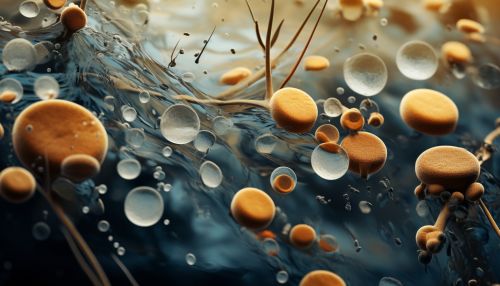Mechanisms of Microbial Biodegradation of Environmental Pollutants
Introduction
Microbial biodegradation is a process that involves the use of microorganisms such as bacteria, fungi, and algae to break down environmental pollutants into less harmful substances. This process is a key component of the natural biogeochemical cycles and plays a crucial role in maintaining the health and balance of ecosystems. The mechanisms of microbial biodegradation of environmental pollutants are complex and involve a range of biochemical and physiological processes.


Mechanisms of Microbial Biodegradation
Microorganisms utilize environmental pollutants as a source of carbon and energy for their growth and reproduction. This process involves the enzymatic breakdown of pollutants, which is often facilitated by the production of specific enzymes that can catalyze the degradation of these compounds.
Enzymatic Breakdown
The first step in the microbial biodegradation of environmental pollutants is the enzymatic breakdown of these compounds. This is typically achieved through the action of oxidoreductases, hydrolases, and lyases, among other enzymes. These enzymes catalyze the oxidation, hydrolysis, and lysis of pollutants, respectively, leading to their degradation into simpler compounds.
Metabolic Pathways
Following the enzymatic breakdown of pollutants, the resulting compounds are further metabolized through various metabolic pathways. These pathways involve a series of biochemical reactions that convert the degraded compounds into simpler substances that can be utilized by the microorganisms for their growth and reproduction.
Genetic Regulation
The ability of microorganisms to degrade environmental pollutants is often regulated at the genetic level. Many microorganisms possess specific genes that encode for the production of enzymes involved in the biodegradation of pollutants. These genes are often induced in the presence of pollutants, leading to the upregulation of enzyme production and enhanced biodegradation.
Factors Influencing Microbial Biodegradation
Several factors can influence the efficiency of microbial biodegradation of environmental pollutants. These include the nature and concentration of the pollutants, the species and abundance of microorganisms present, and environmental conditions such as temperature, pH, and nutrient availability.
Nature and Concentration of Pollutants
The nature and concentration of pollutants can significantly influence their biodegradability. Some pollutants are more readily degraded by microorganisms than others, depending on their chemical structure and solubility. Additionally, the concentration of pollutants can affect the rate of biodegradation, with higher concentrations often leading to increased biodegradation rates.
Microbial Species and Abundance
The species and abundance of microorganisms present in an environment can also influence the efficiency of biodegradation. Certain species are more efficient at degrading specific pollutants, and a higher abundance of these species can lead to increased biodegradation rates.
Environmental Conditions
Environmental conditions such as temperature, pH, and nutrient availability can also affect the efficiency of microbial biodegradation. Optimal conditions can enhance the growth and activity of microorganisms, leading to increased biodegradation rates.
Applications of Microbial Biodegradation
Microbial biodegradation has several applications in environmental management and bioremediation. These include the treatment of wastewater, the remediation of contaminated soil and groundwater, and the degradation of industrial waste.
Wastewater Treatment
Microbial biodegradation is a key process in the treatment of wastewater. Microorganisms are used to degrade organic pollutants in wastewater, leading to the production of less harmful substances that can be safely discharged into the environment.
Soil and Groundwater Remediation
Microbial biodegradation is also used in the remediation of contaminated soil and groundwater. This involves the use of microorganisms to degrade pollutants in these environments, reducing their toxicity and mitigating their environmental impact.
Industrial Waste Degradation
Microbial biodegradation is also employed in the degradation of industrial waste. This involves the use of microorganisms to degrade toxic and hazardous substances in industrial waste, reducing their environmental impact and facilitating their safe disposal.
Conclusion
Microbial biodegradation of environmental pollutants is a complex process that involves a range of biochemical and physiological mechanisms. These mechanisms are influenced by several factors, including the nature and concentration of pollutants, the species and abundance of microorganisms, and environmental conditions. Despite these complexities, microbial biodegradation has several important applications in environmental management and bioremediation, making it a key area of research and development in environmental science.
